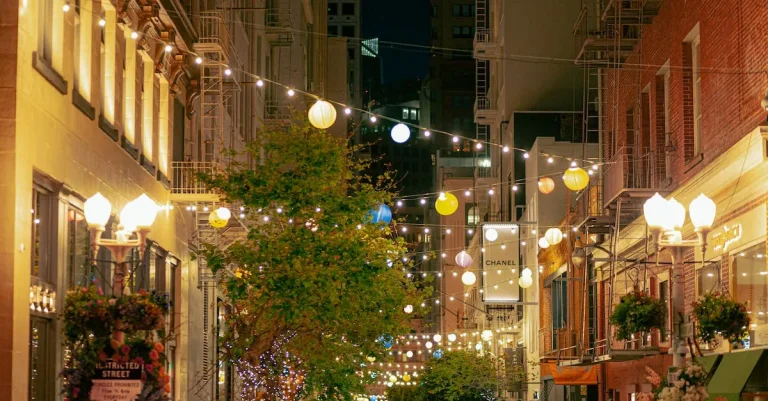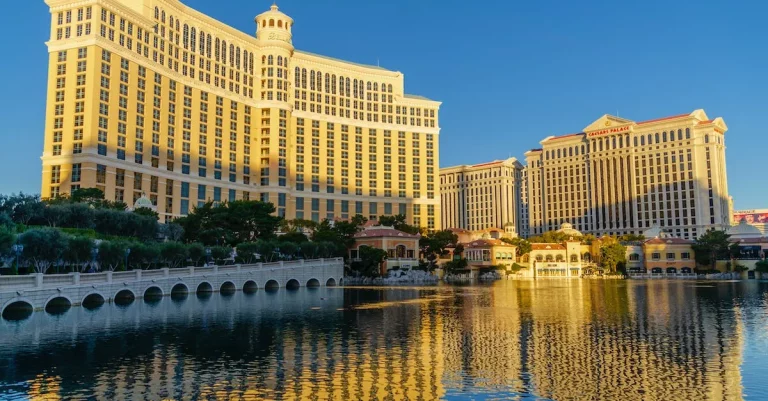Manhattan: New York County
Manhattan occupies a unique place in New York City’s fabric as the most densely populated and geographically smallest of the city’s five boroughs. But did you know Manhattan is also its own county? Let’s take a closer look at Manhattan as New York County and how it operates within NYC’s complex governmental structure.
If you’re short on time, here’s a quick answer: Manhattan is coextensive with New York County, one of the original counties established in 1683 that later became part of New York City while retaining its own county government.
History and Formation of Manhattan as a County
Manhattan, often referred to as the heart of New York City, has a rich and fascinating history that dates back centuries. The formation of Manhattan as a county can be traced back to two significant events: the establishment of the original 12 counties in 1683 and the consolidation of New York City in 1898.
1683: Original 12 Counties
In 1683, the Province of New York was divided into 12 counties, and Manhattan was one of them. At the time, Manhattan was known as New York County and was named after the Duke of York, who later became King James II of England.
This division was part of the larger effort to establish local governments and promote efficient administration in the newly established English colony.
The original 12 counties played a crucial role in shaping the political and administrative structure of the region. Each county had its own local government, including a sheriff, a judge, and other officials.
This allowed for more localized decision-making and the establishment of a system that could address the needs and concerns of the residents of Manhattan and the surrounding areas.
1898: Consolidation into NYC
Fast forward to the late 19th century, and Manhattan underwent a significant transformation with the consolidation of New York City. In 1898, the five boroughs of Manhattan, Brooklyn, Queens, The Bronx, and Staten Island were merged to form the modern-day New York City we know today.
The consolidation of the five boroughs into one city was a monumental event that brought together diverse communities and resources under a unified administration. Manhattan, as a county, played a central role in this consolidation due to its prominent status as the economic, cultural, and political hub of the city.
This consolidation resulted in numerous benefits for Manhattan and the other boroughs. It allowed for improved infrastructure development, better coordination of public services, and increased opportunities for economic growth and cultural exchange.
Today, Manhattan continues to thrive as a vibrant and dynamic county within the larger framework of New York City.
For more information on the history of Manhattan as a county, you can visit the New York Public Library’s website.
Geography and Population of Manhattan County
Boundaries and Neighborhoods
Manhattan County, often referred to simply as Manhattan, is one of the five boroughs of New York City. It is located at the southern tip of the state of New York, on the island of Manhattan, which is bounded by the Hudson River to the west, the East River to the east, and the Harlem River to the north.
Manhattan is connected to the mainland by several bridges and tunnels, making it easily accessible for both residents and visitors.
Manhattan is comprised of various neighborhoods, each with its own unique character and charm. From the bustling streets of Times Square to the serene beauty of Central Park, there is something for everyone in Manhattan.
Some of the most well-known neighborhoods include the Upper East Side, the Upper West Side, Greenwich Village, SoHo, and Harlem. Each neighborhood offers a distinct atmosphere, with a mix of residential, commercial, and cultural areas.
Demographics and Density
Manhattan County has a diverse population, consisting of people from all walks of life. According to the latest census data, the population of Manhattan is over 1.6 million people. This makes it the most densely populated county in the United States, with an average of over 72,000 people per square mile.
The population of Manhattan is constantly changing, with people from all around the world drawn to the vibrant and dynamic city. The county is known for its cultural diversity, with residents from a wide range of ethnic backgrounds.
This diversity is reflected in the various neighborhoods, where different cultures, traditions, and cuisines coexist.
It is worth noting that Manhattan’s population density is not only due to its size, but also because of its status as a major business and cultural hub. The county is home to numerous iconic landmarks, including the Empire State Building, Wall Street, and Broadway.
These attractions, along with the countless job opportunities and cultural offerings, continue to attract people to Manhattan, contributing to its high population density.
For more information about Manhattan County’s geography and population, you can visit the official website of the New York City Department of City Planning.
Manhattan’s County Government
As the most densely populated borough of New York City, Manhattan has a well-established county government that serves its residents and ensures the smooth functioning of the local judicial system. The county government is responsible for various functions, including law enforcement, legal proceedings, and maintaining public safety.
District Attorney’s Office
The District Attorney’s Office in Manhattan is an integral part of the county government, responsible for prosecuting criminal cases and representing the state in legal matters. The office works tirelessly to ensure justice is served and the rights of the victims are protected.
The District Attorney’s Office handles a wide range of cases, from petty crimes to high-profile felonies, and plays a crucial role in maintaining law and order in Manhattan.
The District Attorney’s Office is staffed with a team of experienced prosecutors who work closely with law enforcement agencies to gather evidence, interview witnesses, and build strong cases against the accused.
The office’s commitment to justice is reflected in its conviction rates and its efforts to protect the rights of all individuals involved in the legal process.
Sheriff’s Office and Courts
The Sheriff’s Office in Manhattan is responsible for enforcing court orders, serving legal documents, and providing security within the court premises. The office plays a crucial role in ensuring the smooth functioning of the judicial system by executing warrants, apprehending fugitives, and maintaining order in the courtrooms.
In addition to the Sheriff’s Office, Manhattan’s county government also houses various courts that handle different types of cases. These include criminal courts, family courts, civil courts, and specialized courts such as the Surrogate’s Court and the Housing Court.
These courts provide a platform for individuals to seek justice, resolve disputes, and uphold the rule of law.
The county government in Manhattan is dedicated to providing a fair and efficient legal system for its residents. Its commitment to upholding justice and maintaining public safety is evident through the various agencies and offices that work together to ensure the smooth functioning of the county’s government.
Interactions with NYC Governance
Manhattan, as one of the five boroughs that make up New York City, has a unique relationship with the city’s governance. Interactions with the Mayor, City Council, and various departments play a crucial role in shaping the policies and development of the county.
Mayor, City Council, and Departments
The Mayor of New York City, as the chief executive officer, plays a significant role in the governance of Manhattan. They are responsible for managing the city’s budget, implementing policies, and overseeing various departments.
The Mayor’s decisions can greatly impact Manhattan’s infrastructure, public services, and overall quality of life.
The City Council, consisting of 51 members, also has a say in the governance of Manhattan. They work together with the Mayor to pass laws, allocate funds, and address the needs of the community. The Council’s role is essential in representing the interests of Manhattan residents and ensuring that their voices are heard in city-wide decisions.
Various city departments, such as the Department of Transportation, Department of Parks and Recreation, and Department of Education, also play a role in Manhattan’s governance. These departments are responsible for maintaining infrastructure, providing essential services, and addressing the needs of the community.
Their actions have a direct impact on the daily lives of Manhattan residents.
It is important for Manhattan residents to stay informed about the actions and decisions of the Mayor, City Council, and city departments. This can be done by attending community board meetings, following local news outlets, and engaging with elected officials.
By actively participating in the governance process, residents can have a voice in shaping the future of their county.
Borough Presidency
In addition to the Mayor and City Council, Manhattan has its own Borough President. The Borough President acts as an advocate for the county, representing the interests and concerns of Manhattan residents.
The Borough President’s office plays a vital role in coordinating community boards, engaging with residents, and addressing local issues. They work closely with city agencies and elected officials to ensure that Manhattan’s needs are met and that its unique character is preserved.
Through various initiatives and programs, the Borough President’s office strives to improve the quality of life for all Manhattanites. They focus on issues such as affordable housing, transportation, economic development, and community engagement.
Manhattan residents can reach out to the Borough President’s office for assistance, share their concerns, and get involved in community initiatives. The Borough President’s website, manhattanbp.nyc.gov, provides valuable resources and information on how to engage with the office and stay updated on their initiatives.
Unique Attributes and Distinctions
Tourism and Commerce
Manhattan, the heart of New York County, is widely recognized as a global tourism and commerce hub. With its iconic landmarks such as the Statue of Liberty, Times Square, and Central Park, Manhattan attracts millions of visitors from around the world each year.
The borough is home to countless luxury hotels, high-end boutiques, and world-class restaurants, making it a favored destination for tourists seeking a taste of the vibrant New York City lifestyle.
Additionally, Manhattan boasts a thriving business district, with Wall Street serving as the financial center of the world. The bustling streets of Lower Manhattan are filled with skyscrapers housing major corporations, banks, and financial institutions.
The borough’s strong economic presence and diverse business sectors contribute significantly to the city’s overall economic growth and stability.
Transportation Hub
One of the key distinguishing features of Manhattan is its exceptional transportation network. The borough is well-connected through an extensive system of subways, buses, and taxis, allowing residents and visitors to navigate the city with ease.
The iconic yellow taxis are a common sight on the streets of Manhattan, providing convenient and efficient transportation options.
Furthermore, Manhattan is home to several major transportation hubs, including Grand Central Terminal and Penn Station. These stations serve as gateways to the city, facilitating travel not only within Manhattan but also to other parts of the country.
The accessibility and efficiency of Manhattan’s transportation system contribute to its reputation as a convenient and well-connected urban center.
Culture and Entertainment
Manhattan is a cultural melting pot, offering a diverse range of artistic and entertainment experiences. The borough is known for its world-class museums, such as the Metropolitan Museum of Art and the Museum of Modern Art, which house renowned collections of art from various periods and cultures.
Additionally, Manhattan is a hub for Broadway, the pinnacle of live theater entertainment. The famous Theater District, located in Times Square, showcases a plethora of Broadway shows and musicals, drawing theater enthusiasts from all over the world.
The district’s vibrant energy and electrifying performances make it a must-visit destination for anyone seeking a taste of the glitz and glamour of the entertainment industry.
Moreover, Manhattan hosts numerous cultural festivals and events throughout the year, celebrating the diversity and vibrancy of its residents. From parades like the Macy’s Thanksgiving Day Parade to cultural festivals like the Tribeca Film Festival, there is always something happening in Manhattan that showcases the borough’s rich cultural tapestry.
Conclusion
As both a borough and county of New York City, Manhattan occupies a one-of-a-kind position. Its dual roles provide diverse governance while retaining the vibrant identity of one of America’s most dynamic urban areas.
In summary, Manhattan is coextensive with New York County, one of the original counties of New York that remained intact when the city consolidated in 1898, retaining its own governance.








